Plaintiffs alleged that a terrible crime would have been averted with a faster response to a 9-1-1 call. The Fifth Circuit, applying City of Dallas v. Sanchez, 494 S.W.3d 722 (Tex. 2016), found a lack of proximate cause (and thus, immunity applied) because “plaintiffs have not plausibly alleged that any of the intervening parties would have acted differently,” including the call center operator and emergency personnel on the scene. The allegations on the general subject of response time were too speculative to satisfy Twombly (footnote 4). And “‘even if the brief delay in relaying Cook’s location ‘contributed to circumstances that delayed potentially life-saving assistance, the [delay] was too attenuated from the cause of [Cook’s] death . . . to be a proximate cause.” Cook v. City of Dallas, No. 16-10105 (March 29, 2017).
Category Archives: Damages
 A church in Hattiesburg, Mississippi proved that its insurer did not properly handle its claim resulting from tornado damage (right), resulting in a damages award of over $1,000,000. The Fifth Circuit affirmed against challenges by both sides; as to the church’s request for punitive damages, it held: “Taking the facts in the light most favorable to Mount Carmel, GuideOne’s alleged conduct did not rise to the necessary level of an independent tort that would warrant punitive damages. Mount Carmel merely alleges that GuideOne had ‘knowledge of the financial harm that would result’ from its cancellation of the policy. But this type of knowledge is likely present for many cancellations and alone is not sufficient to rise to the level of an independent tort. Accordingly, it does not warrant punitive damages.” GuideOne Elite Ins. Co. v. Mount Carmel Ministries, No. 15-60915 (Jan. 23, 2017, unpublished).
A church in Hattiesburg, Mississippi proved that its insurer did not properly handle its claim resulting from tornado damage (right), resulting in a damages award of over $1,000,000. The Fifth Circuit affirmed against challenges by both sides; as to the church’s request for punitive damages, it held: “Taking the facts in the light most favorable to Mount Carmel, GuideOne’s alleged conduct did not rise to the necessary level of an independent tort that would warrant punitive damages. Mount Carmel merely alleges that GuideOne had ‘knowledge of the financial harm that would result’ from its cancellation of the policy. But this type of knowledge is likely present for many cancellations and alone is not sufficient to rise to the level of an independent tort. Accordingly, it does not warrant punitive damages.” GuideOne Elite Ins. Co. v. Mount Carmel Ministries, No. 15-60915 (Jan. 23, 2017, unpublished).
 Jarrod Burle, a commercial fisherman, made a claim for lost income with the Deepwater Horizon settlement. He then obtained loans, in the form of “pre-settlement funding contracts,” from Woodbridge Baric Pre-Settlement Funding, LLC. After receiving payment from the settlement system, he paid $20,000 back to Woodbridge. A special master then sought to recover that payment from Woodbridge after Burle was found to have made a fraudulent claim. The Fifth Circuit reversed a judgment against Woodbridge, rejecting an analogy between Woodbridge and an attorney with a contingent fee contract, and applying the more general rule that “[b]ecause Woodbridge Baric’s claim for the repayment of the loan was not purely contingent upon the success of Burrle’s claims for compensation, the failure of this contingency did not extinguish [its] claim and does not prevent [it] from asserting its valid interest in defense of its right to retain the funds as a bona fide payee.” In re Deepwater Horizon, No. 15-30599 (revised Jan. 9, 2017).
Jarrod Burle, a commercial fisherman, made a claim for lost income with the Deepwater Horizon settlement. He then obtained loans, in the form of “pre-settlement funding contracts,” from Woodbridge Baric Pre-Settlement Funding, LLC. After receiving payment from the settlement system, he paid $20,000 back to Woodbridge. A special master then sought to recover that payment from Woodbridge after Burle was found to have made a fraudulent claim. The Fifth Circuit reversed a judgment against Woodbridge, rejecting an analogy between Woodbridge and an attorney with a contingent fee contract, and applying the more general rule that “[b]ecause Woodbridge Baric’s claim for the repayment of the loan was not purely contingent upon the success of Burrle’s claims for compensation, the failure of this contingency did not extinguish [its] claim and does not prevent [it] from asserting its valid interest in defense of its right to retain the funds as a bona fide payee.” In re Deepwater Horizon, No. 15-30599 (revised Jan. 9, 2017).
 The unsuccessful plaintiff in Dawson v. RockTenn Services, Inc. sued because of injuries he suffered while delivering sulfuric acid to a paper mill. In yet another opinion that endorses careful recordkeeping, the Fifth Circuit affirmed judgment for the defendants: “Under Rock-Tenn’s operating procedures, Martin Transport’s drivers were required to, and apparently did, check that the pressure-release line was ‘free from defects and
The unsuccessful plaintiff in Dawson v. RockTenn Services, Inc. sued because of injuries he suffered while delivering sulfuric acid to a paper mill. In yet another opinion that endorses careful recordkeeping, the Fifth Circuit affirmed judgment for the defendants: “Under Rock-Tenn’s operating procedures, Martin Transport’s drivers were required to, and apparently did, check that the pressure-release line was ‘free from defects and
void of other materials’ prior to each delivery. Martin Transport’s drivers delivered acid to the mill at least daily, often twice daily, without ever apparently notifying Rock-Tenn of any defect in the pressure-release line. In the absence of any countervailing evidence to suggest that a reasonable person in Rock-Tenn’s position would have undertaken further inspection or maintenance of the pressure-release line, there is no basis for imputing RockTenn with constructive knowledge of an alleged defect in that line.” No. 16-30112 (Dec. 27, 2016, unpublished).
 Robert dePerrodil successfully sued for the injuries he suffered when a wave hit the boat he was on. He recovered damages based upon his plan to work until age 75; the defendant argued that the “court erred by using the plaintiff’s stated retirement goal, rather than the BLS average.” The Fifth Circuit affirmed, noting that dePerrodil had a “‘very reasonable’ goal, considering his medical history, work history, and future medical prognosis,” distinguishing other cases in the area that turned on more vague testimony. Perrodil v. Bozovic Marine, Inc., No. 16-30009 (Nov. 17, 2016, unpublished).
Robert dePerrodil successfully sued for the injuries he suffered when a wave hit the boat he was on. He recovered damages based upon his plan to work until age 75; the defendant argued that the “court erred by using the plaintiff’s stated retirement goal, rather than the BLS average.” The Fifth Circuit affirmed, noting that dePerrodil had a “‘very reasonable’ goal, considering his medical history, work history, and future medical prognosis,” distinguishing other cases in the area that turned on more vague testimony. Perrodil v. Bozovic Marine, Inc., No. 16-30009 (Nov. 17, 2016, unpublished).
 A steel-hulled tugboat, owned by Marquette, allided with the fiberglass-hulled SES Ekwata, rendering the Ekwata unusable. In the resulting litigation, the plaintiff won damages and an award of sanctions under the district court’s inherent power. On appeal, “Marquette asserts that the fee award was unwarranted because Marquette had a good faith basis to challenge the quantum of damages and thus in proceeding through a trial. But even if true, this fact did not justify Marquette’s intransigence on liability or the means by which Marquette defended [Plainitff’s] damages claim—namely, one expert who, according to the
A steel-hulled tugboat, owned by Marquette, allided with the fiberglass-hulled SES Ekwata, rendering the Ekwata unusable. In the resulting litigation, the plaintiff won damages and an award of sanctions under the district court’s inherent power. On appeal, “Marquette asserts that the fee award was unwarranted because Marquette had a good faith basis to challenge the quantum of damages and thus in proceeding through a trial. But even if true, this fact did not justify Marquette’s intransigence on liability or the means by which Marquette defended [Plainitff’s] damages claim—namely, one expert who, according to the
district court’s findings, opined on value ‘without including any comparables, without considering the equipment on the vessel, without an accurate description of the vessel, and without reliable underlying information” and a second expert who, according to the district court’s findings, “not only failed to correct the glaringly incorrect information set forth in [the first expert’s] report, but incorporated it into his own.” Accordingly, the Fifth Circuit affirmed. Moench v. Marquette Transp. Co. (revised October 13, 2016).
 A group of optometrists won judgment against Wal-Mart for $1,395,400, consisting entirely of statutory penalties relating to Wal-Mart’s influence over their working hours. After withdrawing the initial panel opinion and then receiving answers to certified questions in Forte v. Wal-Mart Stores, Inc., No. 15-0146 (Tex. May 20, 2016), the Fifth Circuit again concluded that “the district court’s judgment regarding damages must be vacated; attorneys’ fees are the only matter that remains in the case.” Forte v. Wal-Mart Stores, Inc., No. 12-40854 (Oct. 27, 2016).
A group of optometrists won judgment against Wal-Mart for $1,395,400, consisting entirely of statutory penalties relating to Wal-Mart’s influence over their working hours. After withdrawing the initial panel opinion and then receiving answers to certified questions in Forte v. Wal-Mart Stores, Inc., No. 15-0146 (Tex. May 20, 2016), the Fifth Circuit again concluded that “the district court’s judgment regarding damages must be vacated; attorneys’ fees are the only matter that remains in the case.” Forte v. Wal-Mart Stores, Inc., No. 12-40854 (Oct. 27, 2016).
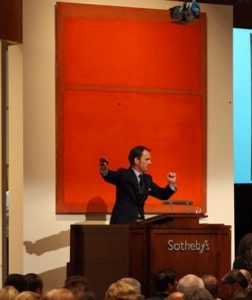 Hoffman v. L&M Arts arose from the sale of a 1961 Rothko painting (right) by Sotheby’s in 2010; a previous owner alleged that this sale revealed facts about her own sale, in violation of a confidentiality provision in the sales contract that said: “All parties agree to make maximum efforts to keep all aspects of this transaction confidential indefinitely.” The Fifth Circuit ruled for the defense in all respects, concluding that:
Hoffman v. L&M Arts arose from the sale of a 1961 Rothko painting (right) by Sotheby’s in 2010; a previous owner alleged that this sale revealed facts about her own sale, in violation of a confidentiality provision in the sales contract that said: “All parties agree to make maximum efforts to keep all aspects of this transaction confidential indefinitely.” The Fifth Circuit ruled for the defense in all respects, concluding that:
- The original owner did not state a fraud claim against the relevant gallery, based on its alleged misrepresentation of its authority to act on behalf of an unnamed buyer, or its alleged misrepresentation about representing an entity or individual. (Notably, the owner did not argue in the district court that equitable relief could still be appropriate without proof of damage), or its claim that the piece would “disappear” into its client’s private collection.
- The contract did not require secrecy about the fact of the sale, based on the plain meaning of the term “aspect,” other provisions in the agreement, and the Texas policy against restraints on alienability.
- The questions about damages associated with the alleged breach either reflected speculative bargains, incorrect damages measures, or a disgorgement theory that is not well-supported as a Texas contract remedy.
No. 15-10046 (Sept. 28, 2016).
 The plaintiff in GlobeRanger Corp. v. Software AG won a $15 million judgment for misappropriation of trade secrets. The Fifth Circuit affirmed, holding:
The plaintiff in GlobeRanger Corp. v. Software AG won a $15 million judgment for misappropriation of trade secrets. The Fifth Circuit affirmed, holding:
- After a thorough review of Circuit precedent – not all entirely consistent – “that GlobeRanger’s trade secret misappropriation claim requires establishing an additional element than what is required to make out a copyright violation: that the protected information was taken via improper means or breach of a confidential relationship. Because the state tort provides substantially different protection than copyright law, it is not preempted.”
- Recognizing the “jurisdictional Catch-22” created by that ruling, and referring back to an earlier panel opinion from the time of the case’s removal: “As the complaint [then] alleged only conversion of intangible property for which there is equivalency between the rights protected under that state tort and federal copyright law, complete preemption converted the conversion claim into one brought under the Copyright Act that supported federal question jurisdiction at the time of removal and supplemental jurisdiction after it was dismissed.”
- Found that GlobeRanger had offered sufficient evidence of: (1) what specifically constituted its claimed trade secrets; (2) whether Software AG acquired trade secrets improperly or with notice of impropriety, particularly in light of federal contracting regulations; and (3) whether Software AG “used” any trade secret.
The opinion concluded with an unfortunately apt observation about the business litigation that is the focus of this blog: “This case demonstrates the unfortunate complexity of much of modern civil litigation. A trial involving a single cause of action—misappropriation of trade secrets (plus a derivate conspiracy claim)—has resulted in an appeal raising numerous issues that span the lifecycle of the lawsuit: jurisdiction; preemption; federal contracting regulations; expert testimony on damages; and jury instructions.
 Extensive tornado damage to a building at the University of Southern Mississippi led to a hard-fought dispute among insurers. The Fifth Circuit’s detailed affirmance of the district court’s opinion turned on this observation about the losing insurer’s postition: “Were this construction adopted, insurers who covered the same risk would be incentivized to enter into a stare-down, each waiting for the other to blink first in order to seize the opportunity to deny coverage. Such an outcome is neither reasonable nor commercially practicable.” Southern Ins. Co. v. Affiliate
Extensive tornado damage to a building at the University of Southern Mississippi led to a hard-fought dispute among insurers. The Fifth Circuit’s detailed affirmance of the district court’s opinion turned on this observation about the losing insurer’s postition: “Were this construction adopted, insurers who covered the same risk would be incentivized to enter into a stare-down, each waiting for the other to blink first in order to seize the opportunity to deny coverage. Such an outcome is neither reasonable nor commercially practicable.” Southern Ins. Co. v. Affiliate d FM Ins. Co., No. 15060742 (July 21, 2016). (The opinion also features a rare appellate shout-out to T.S. Eliot’s The Hollow Men.)
d FM Ins. Co., No. 15060742 (July 21, 2016). (The opinion also features a rare appellate shout-out to T.S. Eliot’s The Hollow Men.)
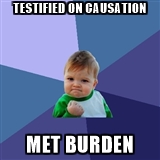 In the trial of a dispute about the handling of another lawsuit, the plaintiffs’ lawyer in that other suit testified that he would not have settled for less than $3 million. On appeal, two expert reports were cited in opposition to that testimony, and the Fifth Circuit rejected them. It noted that the trial court was within its rights to credit the lawyer’s testimony, and that the reports had been prepared pretrial and thus could not have addressed that testimony. RSUI Indemnity Co. v. American States Ins. Co., No. 15-30976 (July 8, 2016, unpublished).
In the trial of a dispute about the handling of another lawsuit, the plaintiffs’ lawyer in that other suit testified that he would not have settled for less than $3 million. On appeal, two expert reports were cited in opposition to that testimony, and the Fifth Circuit rejected them. It noted that the trial court was within its rights to credit the lawyer’s testimony, and that the reports had been prepared pretrial and thus could not have addressed that testimony. RSUI Indemnity Co. v. American States Ins. Co., No. 15-30976 (July 8, 2016, unpublished).
 Bacharach, upset by the handling of credit reporting by SunTrust, sued it under the FCRA. The Fifth Circuit affirmed summary judgment for SunTrust, noting:
Bacharach, upset by the handling of credit reporting by SunTrust, sued it under the FCRA. The Fifth Circuit affirmed summary judgment for SunTrust, noting:
- Reporting about a failed “flip” of commercial property — especially when the alleged losses involved lost rental income — did not fall within the scope of the FCRA;
- Evidence of other, unrelated payment problems during the relevant period negated the element of causation; and
- “Vague and conclusory deposition testimony” does not establish actionable emotional distress under the FCRA.
Bacharah v. Suntrust Mortgage, No. 15-31009 (June 30, 2016).
 To acquire rights to use patented check processing technology, Chase paid for a license which contained a “Most Favored Licensee” clause. The licensor granted a similar license to another entity for what Chase contended was a significantly lower royalty. Chase sued and won judgment for roughly $70 million. The Fifth Circuit affirmed, agreeing with Chase’s characterization of the royalty as “paid-up lump sum” rather than “running,” and thus concluding that the MFL clause could apply retroactively and require a refund. A dissent saw the clause as only applying prospectively. The opinions identify a number of practical problems that can arise in drafting sophisticated royalty agreements about intellectual property. JP Morgan Chase Bank NA v. Dixon, No. 15-40905 (May 19, 2016).
To acquire rights to use patented check processing technology, Chase paid for a license which contained a “Most Favored Licensee” clause. The licensor granted a similar license to another entity for what Chase contended was a significantly lower royalty. Chase sued and won judgment for roughly $70 million. The Fifth Circuit affirmed, agreeing with Chase’s characterization of the royalty as “paid-up lump sum” rather than “running,” and thus concluding that the MFL clause could apply retroactively and require a refund. A dissent saw the clause as only applying prospectively. The opinions identify a number of practical problems that can arise in drafting sophisticated royalty agreements about intellectual property. JP Morgan Chase Bank NA v. Dixon, No. 15-40905 (May 19, 2016).
 In a significant and technical dispute about Clean Air Act liability related to emissions at Exxon’s complex in Baytown Texas, the Fifth Circuit touched on a matter of broader interest about restitution/calculation of “benefit.” In its analysis of a proper civil penalty, the Court noted that “the effect of spending money to achieve compliance is often not mitigation of economic benefit — rather, plaintiffs may point to such expenditures as evidence of the regulated entity’s economic benefit to the extent the delay in making those expenditures allowed the regulated entity to use the money it saved productively.” Environment Texas Citizens Lobby v. ExxonMobil Corp., No. 15-20030 (May 27, 2016).
In a significant and technical dispute about Clean Air Act liability related to emissions at Exxon’s complex in Baytown Texas, the Fifth Circuit touched on a matter of broader interest about restitution/calculation of “benefit.” In its analysis of a proper civil penalty, the Court noted that “the effect of spending money to achieve compliance is often not mitigation of economic benefit — rather, plaintiffs may point to such expenditures as evidence of the regulated entity’s economic benefit to the extent the delay in making those expenditures allowed the regulated entity to use the money it saved productively.” Environment Texas Citizens Lobby v. ExxonMobil Corp., No. 15-20030 (May 27, 2016).
 In Carpenter Properties Inc. v. JP Morgan Chase Bank, the Fifth Circuit found that a contract had been modified notwithstanding a signature on a formal counteroffer, but then found no liability under a “corporate veil” theory as to Chase: “[M]ere frustration with Chase for its failure to pay a commission once Chase’s identity was known is insufficient to amount to frustration of contractual expectations regarding the party to whom Carpenter looked for performance . . . .” No. 15-60309 (May 4, 2016, unpublished).
In Carpenter Properties Inc. v. JP Morgan Chase Bank, the Fifth Circuit found that a contract had been modified notwithstanding a signature on a formal counteroffer, but then found no liability under a “corporate veil” theory as to Chase: “[M]ere frustration with Chase for its failure to pay a commission once Chase’s identity was known is insufficient to amount to frustration of contractual expectations regarding the party to whom Carpenter looked for performance . . . .” No. 15-60309 (May 4, 2016, unpublished).
 The plaintiffs in Wendt v. 24 Hour Fitness USA, Inc. complained about several violations of the Texas Health Spa Act in the form membership contract of 24 Hour Fitness. Noting the specific remedies provided by that Act, the Fifth Circuit held: “We agree with the district court that Plaintiffs suffered no injury-in-fact. 24 Hour’s alleged violations of the Act did not harm Plaintiffs in any way. To the contrary, 24 Hour gave Plaintiffs exactly what they paid for: access to a gym. Plaintiffs therefore lack Article III standing, and the district court
The plaintiffs in Wendt v. 24 Hour Fitness USA, Inc. complained about several violations of the Texas Health Spa Act in the form membership contract of 24 Hour Fitness. Noting the specific remedies provided by that Act, the Fifth Circuit held: “We agree with the district court that Plaintiffs suffered no injury-in-fact. 24 Hour’s alleged violations of the Act did not harm Plaintiffs in any way. To the contrary, 24 Hour gave Plaintiffs exactly what they paid for: access to a gym. Plaintiffs therefore lack Article III standing, and the district court
properly dismissed the case.” No. 15-10309 (April 13, 2016).
 JAB Energy successfully sued Cashman Equipment and Cashman’s subsidiary, Servicio Marina Superior (“SMS”), establishing at trial that poor performance by the ocean tug “Atlas” led to roughly $5 million in damages. The Fifth Circuit reversed an “alter ego” finding against Cashman, noting the absence of a fraud allegation against either defendant, and observing that JAB could have negotiated for the same warranty protections from Cashman as from SMS. It affirmed on the merits as to SMS, detailing the well-kept records by the plaintiff about how poorly Atlas tugged, especially as to engine performance and fuel consumption. JAB Energy Solutions v. Servicio Marina Superior, No. 15-30504 (Feb. 26, 2016, unpublished).
JAB Energy successfully sued Cashman Equipment and Cashman’s subsidiary, Servicio Marina Superior (“SMS”), establishing at trial that poor performance by the ocean tug “Atlas” led to roughly $5 million in damages. The Fifth Circuit reversed an “alter ego” finding against Cashman, noting the absence of a fraud allegation against either defendant, and observing that JAB could have negotiated for the same warranty protections from Cashman as from SMS. It affirmed on the merits as to SMS, detailing the well-kept records by the plaintiff about how poorly Atlas tugged, especially as to engine performance and fuel consumption. JAB Energy Solutions v. Servicio Marina Superior, No. 15-30504 (Feb. 26, 2016, unpublished).
 Diversity jurisdiction brings unusual claims to the federal courts, none more so than E.C. v. Saraco, in which a girl sued for injuries caused when the neighbors’ poodle attacked her. The poodle owners won summary judgment, and the Fifth Circuit affirmed. The legal issue was the foreseeability of violence by the poodle — whether it was known to have a “vicious and dangerous disposition.” The Court concluded that no fact issue was raised by evidence of (1) the poodle’s tendency to jump when excited, (2) the poodle’s allegedly tender ears, and (3) the girl’s unfamiliarity with the proper way to pet the poodle. No. 15-60434 (Jan. 4, 2016, unpublished). (The above poodle art was drawn by the great Banksy.)
Diversity jurisdiction brings unusual claims to the federal courts, none more so than E.C. v. Saraco, in which a girl sued for injuries caused when the neighbors’ poodle attacked her. The poodle owners won summary judgment, and the Fifth Circuit affirmed. The legal issue was the foreseeability of violence by the poodle — whether it was known to have a “vicious and dangerous disposition.” The Court concluded that no fact issue was raised by evidence of (1) the poodle’s tendency to jump when excited, (2) the poodle’s allegedly tender ears, and (3) the girl’s unfamiliarity with the proper way to pet the poodle. No. 15-60434 (Jan. 4, 2016, unpublished). (The above poodle art was drawn by the great Banksy.)
 Judgment creditors garnished two oil tankers (including the M/V FMPC 30, right); the garnishees appealed as to the connection between them and the judgment debtors. After reviewing the distinction between “alter ego” theories at the jurisdictional and merits stages, the Fifth Circuit reversed. Finding that “[t]he [district court relied almost exclusively on two ‘organizational charts’ submitted by Plaintiffs (taken from Garnishees’ website),” the Court found that the charts “do not actually depict corporate structure” or ” show the functional relationship among the entities.” Accordingly, the case for “jurisdictional veil piercing” was not established and the garnishment proceeding was dismissed. Licea v. Curacao Drydock Co., No. 14-20619 (Nov. 23, 2015).
Judgment creditors garnished two oil tankers (including the M/V FMPC 30, right); the garnishees appealed as to the connection between them and the judgment debtors. After reviewing the distinction between “alter ego” theories at the jurisdictional and merits stages, the Fifth Circuit reversed. Finding that “[t]he [district court relied almost exclusively on two ‘organizational charts’ submitted by Plaintiffs (taken from Garnishees’ website),” the Court found that the charts “do not actually depict corporate structure” or ” show the functional relationship among the entities.” Accordingly, the case for “jurisdictional veil piercing” was not established and the garnishment proceeding was dismissed. Licea v. Curacao Drydock Co., No. 14-20619 (Nov. 23, 2015).
 After 15-plus years of litigation, the remaining issues in Art Midwest Inc. v. Clapper related to the calculation of prejudgment interest. No. 14-10973 (Nov. 9, 2015, last before the Fifth Circuit in Art Midwest Inc. v. Atl. Ltd. P’ship XII, 742 F.3d 206 (5th Cir. 2014)). The Court reversed as to the starting date for calculating interest — even though the first judgment by the district court was reversed in part, the date of that judgment was still the proper starting point under Fed. R. App. P. 37(a) and Masinter v. Tenneco Oil Co., 929 F.2d 191 (5th Cir. 1991), aff’d in relevant part, 938 F.2d 536 (5th Cir. 1991). The opinion also touches on waiver and law-of-the-case issues addressed in the 2014 appeal.
After 15-plus years of litigation, the remaining issues in Art Midwest Inc. v. Clapper related to the calculation of prejudgment interest. No. 14-10973 (Nov. 9, 2015, last before the Fifth Circuit in Art Midwest Inc. v. Atl. Ltd. P’ship XII, 742 F.3d 206 (5th Cir. 2014)). The Court reversed as to the starting date for calculating interest — even though the first judgment by the district court was reversed in part, the date of that judgment was still the proper starting point under Fed. R. App. P. 37(a) and Masinter v. Tenneco Oil Co., 929 F.2d 191 (5th Cir. 1991), aff’d in relevant part, 938 F.2d 536 (5th Cir. 1991). The opinion also touches on waiver and law-of-the-case issues addressed in the 2014 appeal.
T reaty Energy sued for its damages after an involuntary bankruptcy petition against it was dismissed. One of its claims sought damages for losses in connection with attempts to sell its restricted stock during that period. The Fifth Circuit affirmed summary judgment for the defendants, noting: (1) “Though the sales price of restricted shares did fluctuate, it averaged 0.5¢ immediately before, during, and after the pendency of the involuntary petition, and (2) the affiant about an alleged plan to sell restricted shares at a substantial discount lacked personal knowledge, claiming only that he “did assist in the process when requested, which included gathering information when given direct instructions by his superiors.” Treaty Energy Corp. v. Hallin, No. 15-30113 (Oct. 27, 2015, unpublished).
reaty Energy sued for its damages after an involuntary bankruptcy petition against it was dismissed. One of its claims sought damages for losses in connection with attempts to sell its restricted stock during that period. The Fifth Circuit affirmed summary judgment for the defendants, noting: (1) “Though the sales price of restricted shares did fluctuate, it averaged 0.5¢ immediately before, during, and after the pendency of the involuntary petition, and (2) the affiant about an alleged plan to sell restricted shares at a substantial discount lacked personal knowledge, claiming only that he “did assist in the process when requested, which included gathering information when given direct instructions by his superiors.” Treaty Energy Corp. v. Hallin, No. 15-30113 (Oct. 27, 2015, unpublished).
 Hilda Garza sued Starr County for wrongfully discharging her as a county attorney, in retaliation for announcing her candidacy for the local school board, and she won a $1.4 million verdict for front pay at trial. The district court set aside the verdict as advisory, reasoning that it went to an issue of equitable relief, and allowed the County to offer her reinstatement as an alternative remedy. The Fifth Circuit reversed. While Fed. R. Civ. P. 39(c) allows an advisory jury, it does not apply when: (1) the parties voluntarily submit an issue to a jury without formal objection, and (2) the district court does not announce in advance that the verdict is advisory. Garza v. Starr County, Texas, No. 14-41343 (Oct. 20, 2015, unpublished) (citing, inter alia, Alcatel USA, Inc. v. DGI Techs., Inc., 166 F.3d 772 (5th Cir. 1999)). (The County also challenged the award as excessive; while noting that the “more prudent course” would have been for the County to cross-appeal, the Court allowed the County to raise that issue on remand — although noting that the County’s lack of earlier objections would limit what it could raise.)
Hilda Garza sued Starr County for wrongfully discharging her as a county attorney, in retaliation for announcing her candidacy for the local school board, and she won a $1.4 million verdict for front pay at trial. The district court set aside the verdict as advisory, reasoning that it went to an issue of equitable relief, and allowed the County to offer her reinstatement as an alternative remedy. The Fifth Circuit reversed. While Fed. R. Civ. P. 39(c) allows an advisory jury, it does not apply when: (1) the parties voluntarily submit an issue to a jury without formal objection, and (2) the district court does not announce in advance that the verdict is advisory. Garza v. Starr County, Texas, No. 14-41343 (Oct. 20, 2015, unpublished) (citing, inter alia, Alcatel USA, Inc. v. DGI Techs., Inc., 166 F.3d 772 (5th Cir. 1999)). (The County also challenged the award as excessive; while noting that the “more prudent course” would have been for the County to cross-appeal, the Court allowed the County to raise that issue on remand — although noting that the County’s lack of earlier objections would limit what it could raise.)
 Allstate sued a group of chiropractic clinics and law firms under RICO, alleging that they conspired to send them fraudulent bills for unnecessary services. Allstate won a 7-figure judgment at trial. The Fifth Circuit affirmed, reviewing some basic RICO principles after recent Supreme Court rulings:
Allstate sued a group of chiropractic clinics and law firms under RICO, alleging that they conspired to send them fraudulent bills for unnecessary services. Allstate won a 7-figure judgment at trial. The Fifth Circuit affirmed, reviewing some basic RICO principles after recent Supreme Court rulings:
- “Although the evidence proving the two will sometimes coalesce, the government still has to satisfy the organizational metric of the enterprise (including continuity and common purpose) and the statutorily enumerated predicated offenses. There is thus no impermissible collapsing of the distinction between the enterprise and the pattern of racketeering.” (applying a plain error standard of review)
- “[M]ail fraud and its place in RICO framework are different from a case alleging common-law fraud, and one of the differences is the lack of a reliance requirement.” Here, “[r]egardless of how proximate cause is sliced, Allstate proved it. There is no plausible argument that the insurers were unforeseeable victims or otherwise wronged by the caprice of chance.”
- As to damages, distinguishing a similar case that found inadequate proof that all paid-for services were unnecessary, the Court held: “There is no such deficiency here. The court instructed the jury, in awarding damages, to distinguish between the portions of the bills generated for unreasonable or unnecessary services and those not generated for those services. Allstate had experts examine all of the files, not just a representative sample, and one of those witnesses testified that Allstate had internally itemized the elements of each settlement.”
Allstate Ins. Co. v. Plambeck, No. 14-10574 (Sept. 17, 2015).
 In the wake of the Deepwater Horizon accident, plaintiffs sought to bring two class actions against BP alleging violations of federal securities law — one regarding BP’s representations about its pre-spill safety procedures, and one about BP’s post-accident statements as to the flow rate of oil after the spill occurred. The district court certified the post-spill class, concluding that the plaintiffs had established a model of damages consistent with their liability case and capable of measurement across the class, and refused to certify the pre-spill class, finding that it had not satisfied the “common damages” burden established by the Supreme Court in Comcast Corp. v. Behrend, 133 S. Ct. 1426 (2013). The Fifth Circuit affirmed. As to the post-spill class, the Court reviewed BP’s criticisms of the plaintiffs’ damages expert, and found that they were not so potent as to invalidate his theory at the class certification stage. As to the pre-spill class, however, the Court agreed that the expert failed to exclude class members who would have bought the stock even with full knowledge of the alleged risks, making his analysis infirm for certification purposes. Ludlow v. BP, PLC, No. 14-20420 (revised Sept.15, 2015).
In the wake of the Deepwater Horizon accident, plaintiffs sought to bring two class actions against BP alleging violations of federal securities law — one regarding BP’s representations about its pre-spill safety procedures, and one about BP’s post-accident statements as to the flow rate of oil after the spill occurred. The district court certified the post-spill class, concluding that the plaintiffs had established a model of damages consistent with their liability case and capable of measurement across the class, and refused to certify the pre-spill class, finding that it had not satisfied the “common damages” burden established by the Supreme Court in Comcast Corp. v. Behrend, 133 S. Ct. 1426 (2013). The Fifth Circuit affirmed. As to the post-spill class, the Court reviewed BP’s criticisms of the plaintiffs’ damages expert, and found that they were not so potent as to invalidate his theory at the class certification stage. As to the pre-spill class, however, the Court agreed that the expert failed to exclude class members who would have bought the stock even with full knowledge of the alleged risks, making his analysis infirm for certification purposes. Ludlow v. BP, PLC, No. 14-20420 (revised Sept.15, 2015).
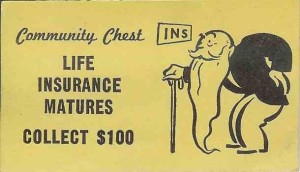 Bartos, an injured seaman, sued for future lost wages. His expert offered calculations based on a retirement age of 55.8 (from a table of work-life expectancies) or 67 (the Social Security full-retirement age). The Fifth Circuit reversed a damages award based on the older age and rendered an award based on the younger one, reasoning: “Barto’s economist did not provide any reason to
Bartos, an injured seaman, sued for future lost wages. His expert offered calculations based on a retirement age of 55.8 (from a table of work-life expectancies) or 67 (the Social Security full-retirement age). The Fifth Circuit reversed a damages award based on the older age and rendered an award based on the younger one, reasoning: “Barto’s economist did not provide any reason to  believe that Barto would continue to work past his statistical work-life expectancy. The only relevant evidence Barto presented at trial was his testimony that he plans to work ‘[a]s long as I can retire. Whatever the retirement age is.’ This scant evidence was not enough to show that Barto ‘by virtue of his health or occupation or other factors, is likely to live and work a longer, or shorter, period than the average.'” Barto v. Shore Construction LLC, No. 14-31326 (revised Sept. 29, 2015).
believe that Barto would continue to work past his statistical work-life expectancy. The only relevant evidence Barto presented at trial was his testimony that he plans to work ‘[a]s long as I can retire. Whatever the retirement age is.’ This scant evidence was not enough to show that Barto ‘by virtue of his health or occupation or other factors, is likely to live and work a longer, or shorter, period than the average.'” Barto v. Shore Construction LLC, No. 14-31326 (revised Sept. 29, 2015).
The plaintiff in International Marine LLC v. FDT proved 33 breaches of the noncompete provisions of a contract related to the chartering of tugboats. The district court and Fifth Circuit agreed that a liquidated damages clause applied to the last several breaches. As to the first five, however, the Court reasoned that the clause “would impose an unreasonable penalty, because due to the parties’ conduct, we know the extent of damages [Plaintiff] suffered from each of these breaches.” It noted: “For over a century, courts have refused to award liquidated damages for contractual breaches solely involving default on payment obligations.” No. 14-31192 (Aug. 10, 2015, unpublished).
Johnny Long, a former bankruptcy debtor, sought to bring FCA claims against his former employer. The defendant successfully obtained dismissal on the ground of judicial estoppel because the claim was not listed on Long’s bankruptcy schedules. After reminding that judicial estoppel, as a flexible and equitable doctrine, does not automatically compel dismissal in such a situation, the Fifth Circuit affirmed. The elements are that “(1) the party against whom judicial estoppel is sought has asserted a legal position which is plainly inconsistent with a prior position, (2) a court accepted the prior position, and (3) the party did not act inadvertently.” The specific issue was the third element, and whether Long had a motivation to conceal. The Court noted three advantageous features the payment terms in Long’s Chapter 13 plan, which disclosure could have endangered — and further noted that after judicial estoppel was raised, Long sought to reopen his case so “he may pay interest to his creditors” if he recovered on his FCA claim. United States ex rel Long v. GSD&M Idea City, LLC, 798 F.3d 265 (5th Cir. 2015). A later award to the defendant of roughly $200,000 in costs was substantially affirmed in United States ex rel Long v. GSDMidea City, LLC, No. 14-11049 (Dec. 1, 2015).
 A contract dispute about the management of several vessels (among them, the M/V Maurader, right) led to a holding that a termination fee was void as a penalty. The contract required the boat owner to pay the management company “fifty percent of what [it] would have earned as a Management Fee had [the] Agreement not been so terminated,” and provided a formula for making that calculation, which in this case was $537,246.86. “The termination fee formula, however, makes no deductions to account for the fact that [management company] would have fewer expenses in the event of termination, and [it] has not quantified the expenses that would remain.” Comar Marine Co. v. Raider Marine Logistics LLC, No. 13-30156 (July 6, 2015).
A contract dispute about the management of several vessels (among them, the M/V Maurader, right) led to a holding that a termination fee was void as a penalty. The contract required the boat owner to pay the management company “fifty percent of what [it] would have earned as a Management Fee had [the] Agreement not been so terminated,” and provided a formula for making that calculation, which in this case was $537,246.86. “The termination fee formula, however, makes no deductions to account for the fact that [management company] would have fewer expenses in the event of termination, and [it] has not quantified the expenses that would remain.” Comar Marine Co. v. Raider Marine Logistics LLC, No. 13-30156 (July 6, 2015).
A set of “kaleidoscopic claims” about the Houston ISD’s contracting process produced several RICO holdings of note in Ramirez Group v. Houston ISD, No. 13-20753 (May 18, 2015):
- To show the requisite injury, “[a] plaintiff need not show that the other party would have been obliged to confer a benefit, only that the other party would have conferred the benefit.” This can be shown by a substantial drop in work assignments coupled with other suspicious activity.
- The Houston ISD is immune from suit under RICO, because a governmental entity cannot form the requisite criminal intent, and because municipal entities enjoy common law immunity from punitive damages.
- Official immunity does not extend to a school trustee accused of acting “wholly outside the legitimate scope” of his duties by allegedly accepting bribes.
- The requisite mental state for tortious interference can be shown “[w]here only a limited number of . . . contractors would be selected, [so] all of the participants in the scheme ‘knew the interference was substantially certain to occur as a result of the conduct.'”
On rehearing, the Fifth Circuit vacated its earlier panel opinion in Wooten v. McDonald Transit Associates, 775 F.3d 689 (5th Cir. 2015), which reversed a default judgment because of inadequate underlying pleadings, and replaced it with an opinion affirming the default judgment. The new opinion holds that “[a]lthough Wooten’s complaint contained very few factual allegations, we conclude that it met the low threshold of content demanded by Federal Rule of Civil Procedure 8 because it provided McDonald Transit with fair notice of Wooten’s claims.” No. 13-11035 (June 10, 2015). The Court thus continues to reserve the question left open in Nishimatsu Construction Co. v. Houston Nat’l Bank, 515 F.2d 1200 (5th Cir. 1975): “We do not consider here the possibility that otherwise fatal defects in the pleadings might be corrected by proof taken by the court at a hearing.”
A business dispute about a telephone service provider’s billing system leads to 2 holdings of broad interest, one procedural and the other substantive:
1A. Waiver. “Although [defendant] moved for a directed verdict at the close of evidence, it did not argue in its motion that the Supply Contract was unenforceable.” Accordingly, under Fed. R. Civ. 50(b), that argument could not be raised post-trial. (Here, in fact, because defendant took the opposite position about the contract in the directed verdict motion, judicial estoppel also barred the later argument.)
1B. Waiver of Waiver. When defendant relied on a certain letter agreement in its Rule 50(b) motion, and plaintiff “did not argue waiver in its response . . . [plaintiff] has forfeited its right to raise the waiver issue on appeal.”
2. Speculative damages. A “strained business relationship” between the parties supported a holding that plaintiff’s $10 million lost profits award, assuming six years of business dealings, was not proven with “reasonable certainty.” Transverse LLC v. Iowa Wireless Services, LLC, No. 13-51098 (revised Aug. 5, 2015, unpublished).
During the 1980s, the Jefferson Group failed to pay both a large loan and its property taxes. The lender failed and the RTC/FDIC acquired the deed of trust for the loan, which it later assigned to another entity. The local school district foreclosed on the property in 1990. Many years later, a dispute arose between the entity who acquired the deed of trust, who asserted a lien on the (now-developed) land, and the owners who traced title to the foreclosure sale. The district court dismissed on limitations grounds. The Fifth Circuit concluded that if the RTC had not effectively consented to the foreclosure sale, then it violated 12 U.S.C. § 1825(b)(2), which meant that the sale “is, without qualification, ‘null and void.'” This would mean that the current owners could not assert a limitations defense. The Court remanded to consider whether a violation had occurred, in light of this conclusion about the effect of a violation. CAP Holdings, Inc. v. Lorden, No. 14-50397 (June 22, 2015).
 Pal-Con, a manufacturer of “regenerators” for gas turbine engines (right), sued a pilot car service for causing a truck wreck that severely damaged one of its products. The service argued that the economic loss rule precluded Pal-Con’s claim. The Fifth Circuit disagreed, citing Chapman Custom Homes, Inc. v. Dallas Plumbing Co., 445 S.W.3d 716, 718 (Tex. 2014). “Here, a manufacturer contracted with a shipper, who subcontracted with a trucking company, who subcontracted with a negligent pilot car service provider . . . [T]he harm suffered by Pal-Con extended beyond the mere economic loss of a contractual benefit from [pilot car service] with [trucking company.]” Pal-Con, Ltd. v. Wheeler, No. 14-10615 (June 22, 2015, unpublished).
Pal-Con, a manufacturer of “regenerators” for gas turbine engines (right), sued a pilot car service for causing a truck wreck that severely damaged one of its products. The service argued that the economic loss rule precluded Pal-Con’s claim. The Fifth Circuit disagreed, citing Chapman Custom Homes, Inc. v. Dallas Plumbing Co., 445 S.W.3d 716, 718 (Tex. 2014). “Here, a manufacturer contracted with a shipper, who subcontracted with a trucking company, who subcontracted with a negligent pilot car service provider . . . [T]he harm suffered by Pal-Con extended beyond the mere economic loss of a contractual benefit from [pilot car service] with [trucking company.]” Pal-Con, Ltd. v. Wheeler, No. 14-10615 (June 22, 2015, unpublished).
Disputes between borrowers and mortgage servicers are common; jury trials in those disputes are rare. But rare events do occur, and in McCaig v. Wells Fargo Bank, 788 F.3d 463 (5th Cir. 2015), a servicer lost a judgment for roughly $400,000 after a jury trial.
The underlying relationship was defined by a settlement agreement in which “Wells Fargo has agreed to accept payments from the McCaigs and to give the McCaigs the opportunity to avoid foreclosure of the Property; as long as the McCaigs make the required payments consistent with the Forbearance Agreement and the Loan Agreement.” Unfortunately, Wells’s “‘computer software was not equipped to handle’ the settlement and forbearance agreements meaning ‘manual tracking’ was required.” This led to a number of accounting mistakes, which in turn led to unjustified threats to foreclose and other miscommunications.
In reviewing and largely affirming the judgment, the Fifth Circuit reached several conclusions of broad general interest:
- The “bona fide error” defense under the Texas Debt Collection Act allows a servicer to argue that it made a good-faith mistake; Wells did not plead that defense here, meaning that its arguments about a lack of intent were not pertinent to the elements of the Act sued upon by plaintiffs;
- The economic loss rule did not bar the TDCA claims, even though the alleged misconduct breached the parties’ contract: “[I]f a particular duty is defined both in a contract and in a statutory provision, and a party violates the duty enumerated in both sources, the economic loss rule does not apply”;
- A Casteel – type charge issue is not preserved if the objecting party submits the allegedly erroneous question with the comment “If I had to draft this over again, that’s the way I’d draft it”;
- The plaintiffs’ lay testimony was sufficient to support awards for mental anguish; and
- “[A] print-out from [plaintiffs’] attorney’s case management system showing individual tasks performed by the attorney and the date on which those tasks were performed” was sufficient evidence to support the award of attorneys fees.
A dissent took issue with the economic loss holding, and would find all of the plaintiffs’ claims barred; “[t]he majority’s reading of these [TDCA] provisions specifically equates mere contract breach with statutory violations[.]”
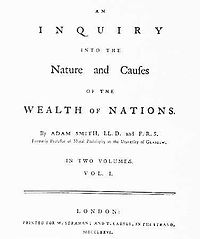 Defendants claimed that a foreclosure sale produced an unfair windfall for Fannie Mae on a substantial commercial property. They alleged that Fannie Mae had a practice of making unfairly low bids on Gulf Coast properties. The Fifth Circuit observed: “As the district court held, evidence regarding Fannie Mae’s other foreclosure practices throughout the Gulf Coast region would not impact whether the subject property was sold for the amount at which it would have changed hands between a willing buyer and seller having knowledge of the relevant facts. At most, such evidence might have suggested that Fannie Mae’s conduct throughout the region affected the fair market value of the subject property. So long as the property was sold for fair market value, however, evidence of the various market forces influencing that value is not relevant to this case.” Fannie Mae v. Lynch, No. 14-60864 (June 2, 2015, unpublished).
Defendants claimed that a foreclosure sale produced an unfair windfall for Fannie Mae on a substantial commercial property. They alleged that Fannie Mae had a practice of making unfairly low bids on Gulf Coast properties. The Fifth Circuit observed: “As the district court held, evidence regarding Fannie Mae’s other foreclosure practices throughout the Gulf Coast region would not impact whether the subject property was sold for the amount at which it would have changed hands between a willing buyer and seller having knowledge of the relevant facts. At most, such evidence might have suggested that Fannie Mae’s conduct throughout the region affected the fair market value of the subject property. So long as the property was sold for fair market value, however, evidence of the various market forces influencing that value is not relevant to this case.” Fannie Mae v. Lynch, No. 14-60864 (June 2, 2015, unpublished).
 Constango Operators Inc. built a pipeline beneath the Atchafalaya Channel. Unfortunately, the Corps of Engineers neglected to forward information about that new pipeline to its Waterways Division, which supervises dredging operations. A dredging barge operated by Weeks Marine (the G.D. MORGAN, right) then hit the pipeline. The resulting trial awarded damages to Constango, with the U.S. liable for 60% and Weeks 40%, and the Fifth Circuit affirmed.
Constango Operators Inc. built a pipeline beneath the Atchafalaya Channel. Unfortunately, the Corps of Engineers neglected to forward information about that new pipeline to its Waterways Division, which supervises dredging operations. A dredging barge operated by Weeks Marine (the G.D. MORGAN, right) then hit the pipeline. The resulting trial awarded damages to Constango, with the U.S. liable for 60% and Weeks 40%, and the Fifth Circuit affirmed.
The opinion turns largely on issues or maritime law and the applicable federal regulations, but has three features of broad general interest:
- An exceptionally clear definition of “extrinsic evidence” as “anything outside a contract itself,” which excluded consideration of material from the Federal Register and CFR in construing an exculpatory clause;
- A reminder that a duty of care can arise from common law even though regulations control and define some aspects of the parties’ dealings; and
- A reminder, under general tort law, that “[t]he fact that Weeks followed the custom of the dredging industry is not dispositive, because a common practice can still be negligent.”
Contango Operators, Inc. v. USA, No. 14-20265 (May 28, 2015, unpublished).
Lincoln Insurance sued several defendants, who it accused of charging excessive fees and otherwise engaging in self-dealing to the detriment of Lincoln. Lincoln won a $16.5 million judgment against two of them for tortious interference. In a “grab bag” of holdings after both sides appealed, the Fifth Circuit held:
- It did not need to reach a difficult Erie issue about when a tortious interference claim accrues under Texas law, where some of the conduct occurs outside the limitations period, because the trial court found sufficient facts to establish that the discovery rule applied;
- Voluntary dismissal of a claim in amended pleading, in response to a dismissal order “based on a technical defect or withdrawal,” waives the right to appeal that order;
- The economic loss rule barred conversion claims where contract provisions dealt with the underlying rights and responsibilities; and
- When a contract provision expressly created a fiduciary duty as to the handling of funds in a particular account, that duty necessarily extended that duty to the handling of those funds before their deposit (and the trial court erred in holding otherwise, requiring a remand).
The Court noted: “[A] litigation strategy with a narrower focus on certain claims and Defendants might reduce the complications, both procedural and substantive, that arose the first go-around.” Lincoln General Ins. Co. v. U.S. Auto Ins. Servcs., Inc., No. 13-10589 (May 18, 2015).
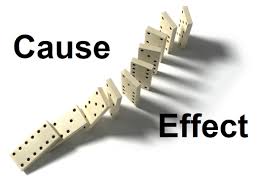 A medical practice hired an employment agency, which recommended an office manager who then embezzled $60,000. The practice sued the agency and lost. The Fifth Circuit observed that under the Texas definition of a “producing cause”:
A medical practice hired an employment agency, which recommended an office manager who then embezzled $60,000. The practice sued the agency and lost. The Fifth Circuit observed that under the Texas definition of a “producing cause”:
- “when boys meet a man because he volunteers with their Boys Club, but the boys and their family then befriend the man outside of the club context, the club’s misrepresentation that it thoroughly checks the background of its volunteers is not a producing cause of the man’s later molestation of the boys outside of the club,” and
- “when a church advertises a teenage boy as a babysitter and parents hire him, the
church’s advertisement is not the producing cause of his later molestation of
their children because the parents themselves chose to hire the teenager as a
babysitter.”
Accordingly, “[b]ecause the doctors of the Medical Group decided to hire Brown based upon their own observations, we conclude that [the agency’s] conduct was not the producing cause of the Medical Group hiring Brown and its resulting injuries.” Cox, Chanez & Williams v. Howroyd-Wright Employment Agency, Inc., No. 14-10799 (May 14, 2015, unpublished).
 In State of Veracruz v. BP, P.L.C., the Fifth Circuit reviewed the dismissal of claims brought by the Mexican states of Veracruz, Tamaulipas, and Quintana Roo, against several corporate defendants, seeking to recover damages related to the effects of the Deepwater Horizon disaster on the environment, fishing industry, and tourism. No. 13-31070 (May 1, 2015). The Fifth Circuit agreed with the district court’s conclusion that the states “lacked a proprietary interest to overcome application of the rule, announced in Robins Dry Dock & Repair Co. v. Flint[, 275 U.S. 303 (1927)], precluding recovery for economic loss absent a proprietary interest in physically damaged property. In a thorough review of Mexican law on this point, featuring analysis by many leading experts in the field, the Court found this article of the Mexican Constitution dispositive: “The Nation has full ownership over all natural resources of the continental shelf and the seabed . . . .”
In State of Veracruz v. BP, P.L.C., the Fifth Circuit reviewed the dismissal of claims brought by the Mexican states of Veracruz, Tamaulipas, and Quintana Roo, against several corporate defendants, seeking to recover damages related to the effects of the Deepwater Horizon disaster on the environment, fishing industry, and tourism. No. 13-31070 (May 1, 2015). The Fifth Circuit agreed with the district court’s conclusion that the states “lacked a proprietary interest to overcome application of the rule, announced in Robins Dry Dock & Repair Co. v. Flint[, 275 U.S. 303 (1927)], precluding recovery for economic loss absent a proprietary interest in physically damaged property. In a thorough review of Mexican law on this point, featuring analysis by many leading experts in the field, the Court found this article of the Mexican Constitution dispositive: “The Nation has full ownership over all natural resources of the continental shelf and the seabed . . . .”
 Plaintiff alleged birth defects from the prescription of metoclopramide, off-label, to control nausea during pregnancy. The prescribing doctor gave “unequivocal” deposition testimony that he chose the medicine because of his clinical experience, and had no contact with marketing efforts by the drug manufacturer. Accordingly, preempted or not, plaintiff’s claims failed for lack of causation. Whitener v. Pliva, Inc., No. 14-30468 (April 9, 2015, unpublished).
Plaintiff alleged birth defects from the prescription of metoclopramide, off-label, to control nausea during pregnancy. The prescribing doctor gave “unequivocal” deposition testimony that he chose the medicine because of his clinical experience, and had no contact with marketing efforts by the drug manufacturer. Accordingly, preempted or not, plaintiff’s claims failed for lack of causation. Whitener v. Pliva, Inc., No. 14-30468 (April 9, 2015, unpublished).
The Fifth Circuit has withdrawn its high-profile opinion (as to damages) in Forte v. Wal-Mart Stores, which found that civil penalties were not available absent actual damages in a suit under a Texas statutory cause of action about optometry. The controlling issues have now been certified to the Texas Supreme Court.
The fault, dear Brutus, is not in our proof, but in our pleadings, that they fail Twombly.
January 6, 2015The plaintiff in Wooten v. McDonald Transit Assocs. sued for age discrimination and the defendant defaulted. The trial court received damages evidence and entered judgment for the plaintiff. The defendant then appeared – unsuccessfully – but obtained reversal from the Fifth Circuit. No. 13-11035 (Jan 2, 2015).
“On appeal, the [defaulted] defendant, although he may not challenge the sufficiency of the evidence, is entitled to contest the sufficiency of the complaint and its allegations to support the judgment.” Here, the majority saw the pleading as a “threadbare recital of a cause of action,” especially weak as to causation. At the hearing, however, “[P]laintiff’s live testimony provides sufficient evidence of each of the elements of his ADEA cause of action to support the entry of default.”
After a careful review of the language of the rules, precedent, and policy, the majority emphasized the pleadings over the evidence: “As there can be no judgment absent competent pleadings, it strains the text of [Rule 55] to suppose that this investigatory power encompasses the adduction of facts necessary to render the pleadings competent in the first place.” The trial court should have either dismissed or, in one of various ways, ordered amendment of the pleadings and afforded the defendant the chance to answer them. A dissent found that “[t]his result is inordinately lopsided and, even worse, favors the wearer of the black hat over the wearer of the white hat.”
The same week as  the en banc vote in the whooping crane litigation, the Fifth Circuit analyzed “Whoomp! (There It Is).” The unfortunate song has been mired in copyright infringement litigation for a decade; the district court entered judgment for the plaintiff for over $2 million, and it was affirmed in Isbell v. DM Records, Inc., Nos. 13-40787 and 14-40545 (Dec. 18, 2014). [The opinion notes: “The word “‘Whoomp!’ appears to be a neologism, perhaps a variant of ‘Whoop!,’ as in a cry of excitement.”]
the en banc vote in the whooping crane litigation, the Fifth Circuit analyzed “Whoomp! (There It Is).” The unfortunate song has been mired in copyright infringement litigation for a decade; the district court entered judgment for the plaintiff for over $2 million, and it was affirmed in Isbell v. DM Records, Inc., Nos. 13-40787 and 14-40545 (Dec. 18, 2014). [The opinion notes: “The word “‘Whoomp!’ appears to be a neologism, perhaps a variant of ‘Whoop!,’ as in a cry of excitement.”]
The main appellate issue was a variant of a frequently-litigated topic — the role of extrinsic evidence in contract interpretation. The assignment in question was governed by California law, which the Court found to “employ[] a liberal parol evidence rule” with respect to consideration of extrinsic evidence. The appellant argued that the district  court erred “in interpreting the Recording Agreement without asking the jury to make any findings on the extrinsic evidence.” The Court disagreed, finding that the record did not present “a question of the credibility of conflicting extrinsic evidence” (emphasis in original): “The only dispute is over the meaning of the Recording Agreement and the inferences that should be drawn from the numerous undisputed pieces of extrinsic evidence. This is a question of law for the court, not for a jury.”
court erred “in interpreting the Recording Agreement without asking the jury to make any findings on the extrinsic evidence.” The Court disagreed, finding that the record did not present “a question of the credibility of conflicting extrinsic evidence” (emphasis in original): “The only dispute is over the meaning of the Recording Agreement and the inferences that should be drawn from the numerous undisputed pieces of extrinsic evidence. This is a question of law for the court, not for a jury.”
 The Fifth Circuit revised its earlier opinion in Aransas Project v. Shaw, No. 13-40317 (Dec. 15, 2014) and also denied en banc review over a dissent joined by three judges (with a fourth also voting for review). The Court continues to hold that the plaintiff failed to establish proximate cause in an environmental case about the environment for whooping cranes. The points of division are whether the panel “independently weighs facts to render judgment in violation of fundamental principles of federal law,” or simply finds that “the record permits only one resolution of the factual issue after the correct law is applied”; a related issue is whether rendition or remand is the appropriate appellate remedy for fact findings premised on an error of law.
The Fifth Circuit revised its earlier opinion in Aransas Project v. Shaw, No. 13-40317 (Dec. 15, 2014) and also denied en banc review over a dissent joined by three judges (with a fourth also voting for review). The Court continues to hold that the plaintiff failed to establish proximate cause in an environmental case about the environment for whooping cranes. The points of division are whether the panel “independently weighs facts to render judgment in violation of fundamental principles of federal law,” or simply finds that “the record permits only one resolution of the factual issue after the correct law is applied”; a related issue is whether rendition or remand is the appropriate appellate remedy for fact findings premised on an error of law.
 Consistent with a 2014 line of cases that reversed summary judgments on credibility issues, the Fifth Circuit reversed a summary judgment for the insurer in a bad faith case in Santacruz v. Allstate Texas Lloyds, No. 13-10786 (Nov. 13, 2014, unpublished). The insured alleged inadequate investigation into her claim of covered wind damage to her home, and the Court found fact issues on two matters.
Consistent with a 2014 line of cases that reversed summary judgments on credibility issues, the Fifth Circuit reversed a summary judgment for the insurer in a bad faith case in Santacruz v. Allstate Texas Lloyds, No. 13-10786 (Nov. 13, 2014, unpublished). The insured alleged inadequate investigation into her claim of covered wind damage to her home, and the Court found fact issues on two matters.
First, as to liability for bad faith, the Court noted: “The extent of Allstate’s inquiry into the claim consisted of its adjuster taking photographs of the damaged home. Significantly, Allstate did not attempt to talk to the contractor, who submitted an affidavit in this case describing what he observed concerning the roof and attributing the cause to wind damage. Nor is there any evidence showing that Allstate obtained weather reports or inquired with neighbors to see if they suffered similar damage, which would tend to show the damage was caused by wind rather than normal wear and tear.”
Second, as to damages, the Court said: “Santacruz claimed three types of damages: (1) the replacement of the roof, supported by an invoice from Pedraza providing that Santacruz paid him $3,900 to repair the roof; (2) a list of damaged personal and household items compiled by Santacruz and his family with an estimate of the value of all the belongings; and (3) repair work needed for the damaged interior of the home, supported by an estimate from a contractor listing the repairs to be done. Further, Pedraza submitted an affidavit testifying to the necessity of repairing the roof, and Santacruz submitted photographs showing the extensive damage to the home’s interior to support his claim that repairs were necessary.”
Because the Fifth Circuit rarely acts en banc in business-related cases, votes by the full court on civil matters deserve careful review as examples of the judges’ broader philosophical leanings. As detailed in another post, I place particular emphasis on (1) the vote to deny en banc review in the Daubert case of Huss v. Gayden (balancing judicial authority with the jury’s); (2) the vote to grant mandamus relief in the venue dispute of In re Volkswagen (balancing appellate authority with that of the trial court); and (3) the 7-8 vote to deny en banc review in the venue case of In re Radmax (same).
The issue in the recent en banc case of McBride v. Estis Well Service, LLC, No. 12-30714 (revised Oct. 24, 2014), while facially addressing an important but technical issue of admiralty law, offers insight about the judges’ views of another topic — the authority of the judiciary as opposed to Congress’s. The introduction to Judge Higginson’s dissent succinctly captures that point: “The question presented by this case is whether seamen may recover punitive damages for their employer’s willful and wanton breach of the general maritime law duty to provide a seaworthy vessel. Because the Supreme Court has said that they can, and Congress has not said they can’t, I would answer in the affirmative, and REVERSE.”
Nine judges (spread across three opinions) saw the answer differently. The conclusion to the majority opinion begins: “In the words of the Supreme Court, ‘Congress has struck the balance for us.'” (citing Mobil Oil Corp. v. Higginbotham, 436 U.S. 618, 623 (1978)). Two concurrences make similar observations. Notably, all of the active judges appointed by a Democratic president at the time of en banc submission are in dissent.
Dawna Casey’s family sued Toyota, alleging that the airbag in a 2010 Highlander did not remain inflated for six seconds and caused her death in an accident. The district court granted judgment as a matter of law and the Fifth Circuit affirmed. Casey v. Toyota Motor Engineering & Manufacturing, No. 13-11119 (Oct. 20, 2014).
As to the claim of manufacturing defect, the Court observed: “Casey . . . established only that the air bag did not remain inflated for six seconds,” and relied on alleged violations of Toyota’s performance standards to prove a defect (rather than a technical explanation of the bag’s performance). The Court rejected those allegations under Texas law and precedent from other jurisdictions: “Each piece of evidence submitted by Casey on this point is result-oriented, not manufacturing-oriented, and provides no detail on how the airbag is constructed.”
As to the claim of design defect, Casey relied primarily on a patent application for an allegedly superior design, which the Court rejected as not having been tested under comparable conditions, and as lacking a real-world track record as to feasibility, risk-benefit, and other such matters. Law360 has written a summary of the opinion.
The Fifth Circuit affirmed liability under the Texas fraudulent transfer statute as to several investors who actually earned returns from the Ponzi scheme run by Allen Stanford. Janvey v. Brown, No. 13-10266 et al. (Sept. 11, 2014). First, the Court dismissed a choice-of-law issue as presenting a “false conflict,” since Antigua had no real interest in the application of its laws to the Stanford scheme when compared to Texas. The Court then endorsed the district court’s approach to the situation, which found that the investors gave reasonably equivalent value to the extent they received back their principal, while requiring the return of interest: “allowing [them] to keep their fraudulent above-market returns in addition to their principal would simply further victimize the true Stanford victims, whose money paid the fraudulent interest.”
In Ferrara Fire Apparatus, Inc. v. JLG Industries, Inc., the Fifth Circuit returned to ground surveyed by the American Law Institute’s Restatement (Third) of Restitution, which the Court recently visited in cases about a faithless employee and the payment of benefits to a seaman. Here, Gradall Industries manufactured a specialized boom called the “Strong Arm,” designed for firefighting, and Ferrara Fire Apparatus contracted to serve as its exclusive sales representative. The relationship soured, Gradall terminated the contract, and Ferrara sued. Ferrara obtained judgment for unjust enrichment for $1 million. The Fifth Circuit reversed, finding no evidence of “an absence of justification or legal cause for the enrichment” as required by Louisiana law: “Gradall was simply competing in the market, which it was entitled to do after ending its exclusive contract with Ferrara.” No. 13-30600 (Sept. 9, 2014, unpublished).
In Forrte v. Wal-Mart Stores, Inc., the Fifth Circuit affirmed a finding of liability under the Texas Optometry Act, based on dealings between Wal-Mart and optometrists who leased space in its stores. No. 12-40854 (revised, Aug. 25, 2014). While the plaintiff optometrists did not claim actual damages, they obtained judgment for over $1,000,000, plus attorneys fees, based on mandatory statutory penalties. Noting that the Act used the phrase “civil penalty,” the Fifth Circuit found that the damages fell within the cap set by Section 41.008(b) of the Civil Practice & Remedies Code — “two times the amount of economic damages [plus] economic damages.” In this case, that was zero, since the plaintiffs sought no other recovery. The Court distinguished Vanderbilt Mortgage v. Flores, 692 F.3d 358 (5th Cir. 2012), based on the terms of the statutes at issue. As the Texas Lawbook notes, this opinion has the potential to introduce uncertainty into other “Private Attorney General” statutes in Texas.